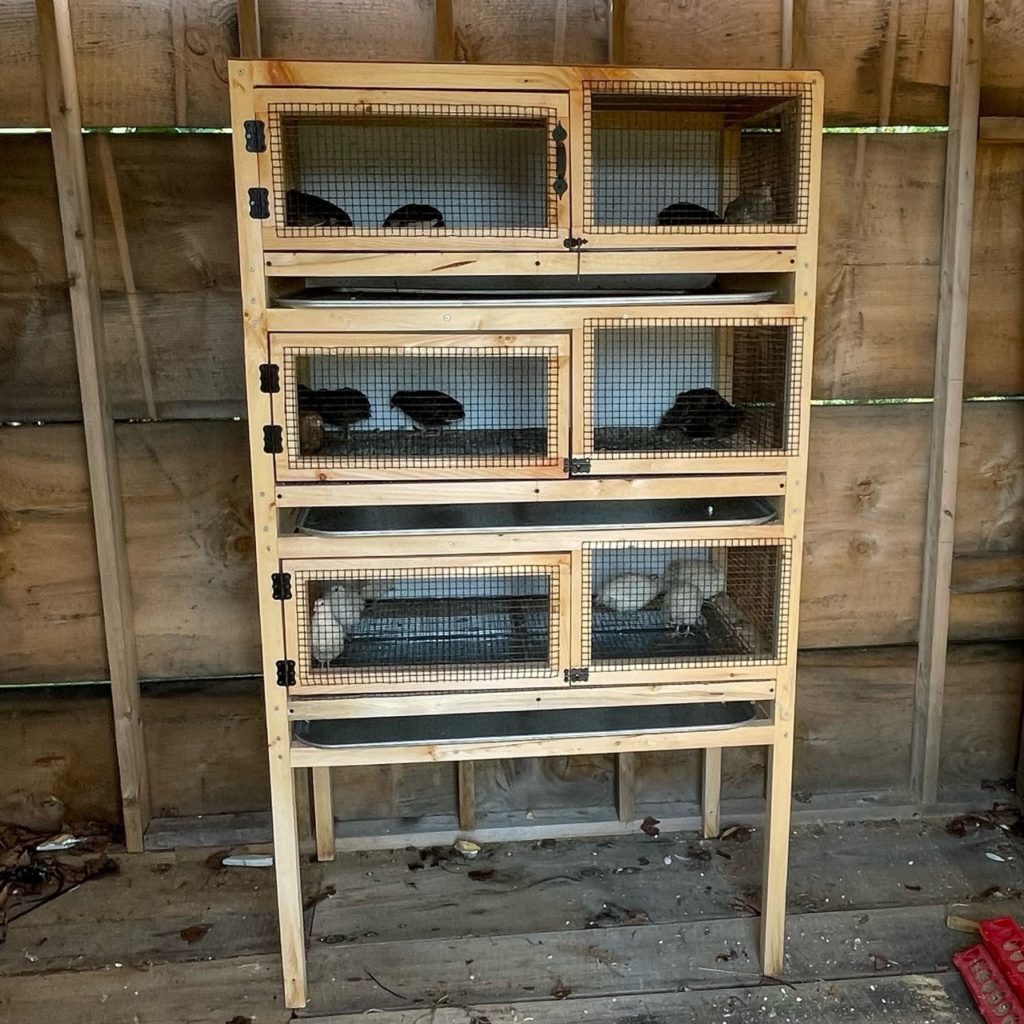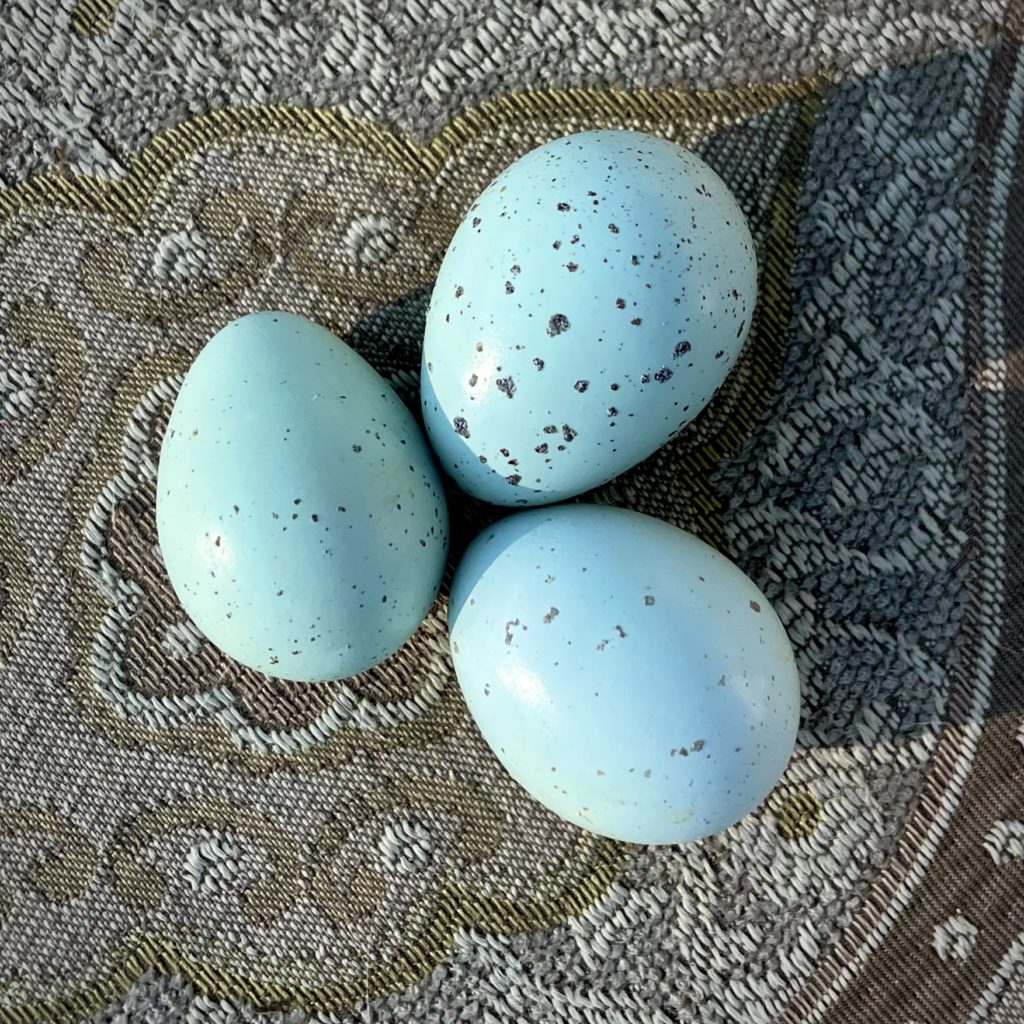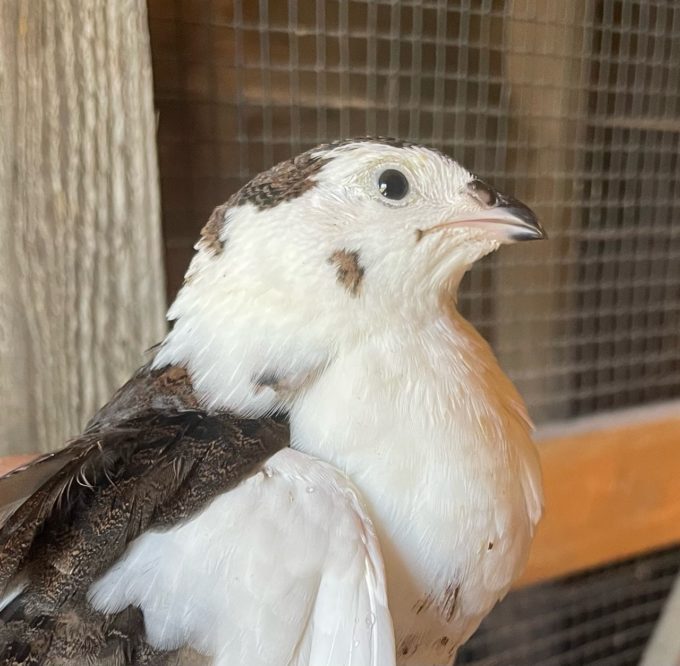
Getting started with quail is so simple, and we are offering a quick set up kit. We picked celadon quail eggs up on our insane road trip this May. They hatched on Memorial Day, and the first hen began laid two days after they hit the six-week mark, which is generally accepted as the earliest laying date for this breed of quail. All of the hens were laying by seven weeks.
Quail Perks:
- No roosts
- No nesting boxes
- No crowing
- Rapid hatching & maturity
- Freaking adorable blue eggs
- Delish delicacy harvested at 5-6 weeks
- Nutritious eggs with many health benefits
Are you kidding me?

We now offer hatching eggs and will also have breeding trios for sale with our 3-tier roll-away layer cages by this fall. In the spring we will have Celadon Quail chicks for sale with our versatile brooder-grower 4-tier cages.
A secondary rollaway egg collection tray for when pullets begin to mature and lay is in the works, and will be available in our shop in the next few weeks. The proven housing method for getting started with quail includes a slide-out poop collection tray system and is easily fitted with gravity fed water cups.
Learn more about what your options are before getting started with quail:
- 24 hatching eggs
- 3-tier housing system
- Gravity fed water cups
- Breeding trios
We will also be offering quail chicks in spring.
To learn more about Celadon quail, read the articles below by clicking on the titles:
Quail for the homestead
Utilizing quail as a food source provides many advantages over chicken, and other poultry types. Quail are resistant to most common poultry diseases. Their prolific egg production, superior maturity time, rapid reproduction rate, smaller housing requirements, and low feed intake are all key to sustainable farming practices.
Quails are highly adaptive to a range of environments and easily acclimate to various climates without impacting productivity. Some disadvantages are having a smaller body and egg size. They are also easily spooked, and not as friendly as chickens.
Meat to bone ratio of chicken and quail
Quail has the highest amount of meat and the least bone ratio among the other fowls. A processed quail contains about 76% meat, 10% bone, and 14% skin. In comparison, the average commercial chicken yields about 62% meat, 23% bone and 15% skin. In addition to the higher bone to meat ratio, quail mature at a much faster rate than chickens. Male quails are often harvested as young as five weeks whereas chicken are harvested at eight weeks. Although, keep in mind it takes four quail to equal one commercial breed chicken.
How are quail and chicken eggs different?
This is the top question folks ask when getting started with quail. Firstly, quail eggs have a higher yolk to white ratio than chicken eggs and it takes 3-4 quail eggs to equal one chickens egg. Quail eggs weigh an average 11–13 g, which is under half an ounce.








What makes a quail lay blue eggs?
Coturnix quail which carry an uncommon, recessive gene, identified as the “ce” gene lay blue eggs. This rare “ce” gene is the Celadon gene. It is an “autosomal recessive gene”, which means in order for it to be expressed by laying blue eggs, the hen laying blue eggs must posses two copies of the gene, one from each parent.
Celadon quail are not a separate variety of quail. Instead, it’s a recessive trait (like red hair and blue eyes in humans), that a very small portion of Coturnix quail carry.
To answer any questions you may have about getting started with quail feel free to email me at wheatonmountainfarm@gmail.com
